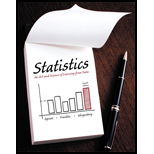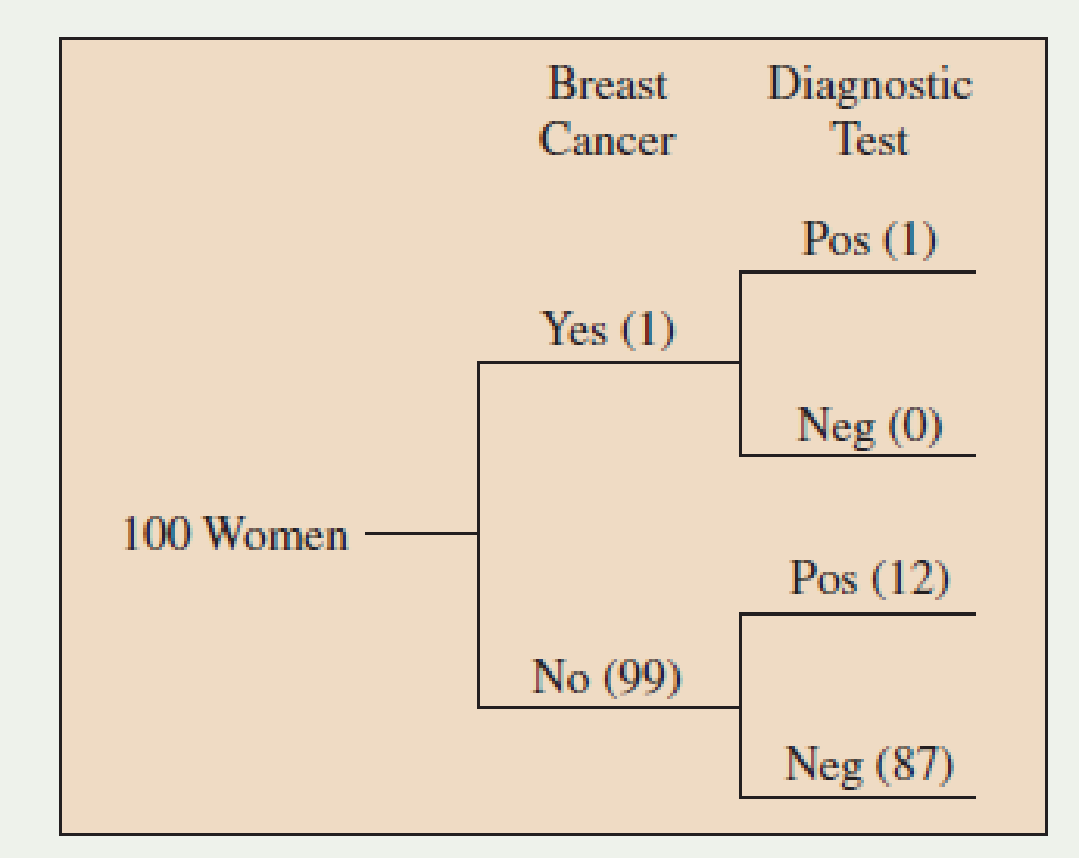
Concept explainers
DNA evidence compelling? DNA evidence can be extracted from biological traces such as blood, hair, and saliva. “DNA fingerprinting” is increasingly used in the courtroom as well as in paternity testing. Given that a person is innocent, suppose that the
- a. Find the probability that Jane Doe is actually innocent, if absolutely her probability of innocence is 0.50. Interpret this probability. Show your solution by introducing notation for
events , specifying probabilities that are given, and using a tree diagram to find your answer. - b. Repeat part a if the unconditional probability of innocence is 0.99. Compare results.
- c. Explain why it is very important for a defense lawyer to explain the difference between P(DNA match | person innocent) and P(person innocent | DNA match).
5.57 Mammogram diagnostics Breast cancer is the most common form of cancer in women, affecting about 10% of women at some time in their lives. There is about a 1% chance of having breast cancer at a given time (that is, P(S) = 0.01 for the state of having breast cancer at a given time). The chance of breast cancer increases as a woman ages, and the American Cancer Society recommends an annual mammogram after age 40 to test for its presence. Of the women who undergo mammograms at any given time, about 1% are typically estimated to actually have breast cancer. The likelihood of a false test result varies according to the breast density and the radiologist’s level of experience. For use of the mammogram to detect breast cancer, typical values reported are sensitivity = 0.86 and specificity = 0.88.
- a. Construct a tree diagram in which the first set of branches shows whether a woman has breast cancer and the second set of branches shows the mammogram result. At the end of the final set of branches, show that P(S and POS) = 0.01 × 0.86 = 0.0086 and report the other intersection probabilities also.
- b. Restricting your attention to the two paths that have a positive test result, show that P(POS) = 0.1274.
- c. Of the women who receive a positive mammogram result, what proportion actually have breast cancer?
- d. The following tree diagram illustrates how P(S|POS) can be so small, using a typical group of 100 women who have a mammogram. Explain how to get the frequencies shown on the branches and why this suggests that P(S|POS) is only about 0.08.

Typical results of mammograms for 100 women
Want to see the full answer?
Check out a sample textbook solution
Chapter 5 Solutions
Statistics: The Art and Science of Learning From Data, Books a la Carte Edition (4th Edition)
- Answer this statistic questionarrow_forwardGood Day, Kindly assist me with solving the following question. Thank you for the assistance.arrow_forwardIf an order is selected, determine the probability of getting an order that is not exact or is from Wendy's. Are the events of selecting an order that is not exact and selecting an order from Wendy's mutually exclusive events?arrow_forward
- Use the data in the following table, which lists order accuracy at the most popular fast-food chains (data from a study of drive-thru fast-food orders). Suppose the orders are randomly selected from those included in the table. McDonald's Burger King Wendy's Taco Bell Exact order 329 264 249 145 Inaccurate order 33 54 31 13arrow_forwardIf an order is selected, determine the probability of getting food that is not McDonald's.If an order is selected, determine the probability of getting an order that is not exact.arrow_forwardIn a randomly selected year, find the probability that Easter falls (a) on a Wednesday or (b) on a Sunday.arrow_forward
- If an order is selected, determine the probability of getting a McDonald's order or an exact order. Are the events of selecting a McDonald's order and selecting an exact order mutually exclusive events?arrow_forwardIn a recent year, there were about 3,000,000 skydives, and 21 of them resulted in deaths. Find the probability of dying while skydiving.arrow_forwardIn a study of drivers who study or work at the University of Los Lagos, it was found that 3,785 sent cell phone text messages while driving during the previous 30 days, and 4,120 did not send text messages while driving during the same period. Based on these results, if a driver who studies or works at ULAGOS is randomly selected, determine the probability that they have sent text messages while driving during the previous 30 days.arrow_forward
 Holt Mcdougal Larson Pre-algebra: Student Edition...AlgebraISBN:9780547587776Author:HOLT MCDOUGALPublisher:HOLT MCDOUGAL
Holt Mcdougal Larson Pre-algebra: Student Edition...AlgebraISBN:9780547587776Author:HOLT MCDOUGALPublisher:HOLT MCDOUGAL



